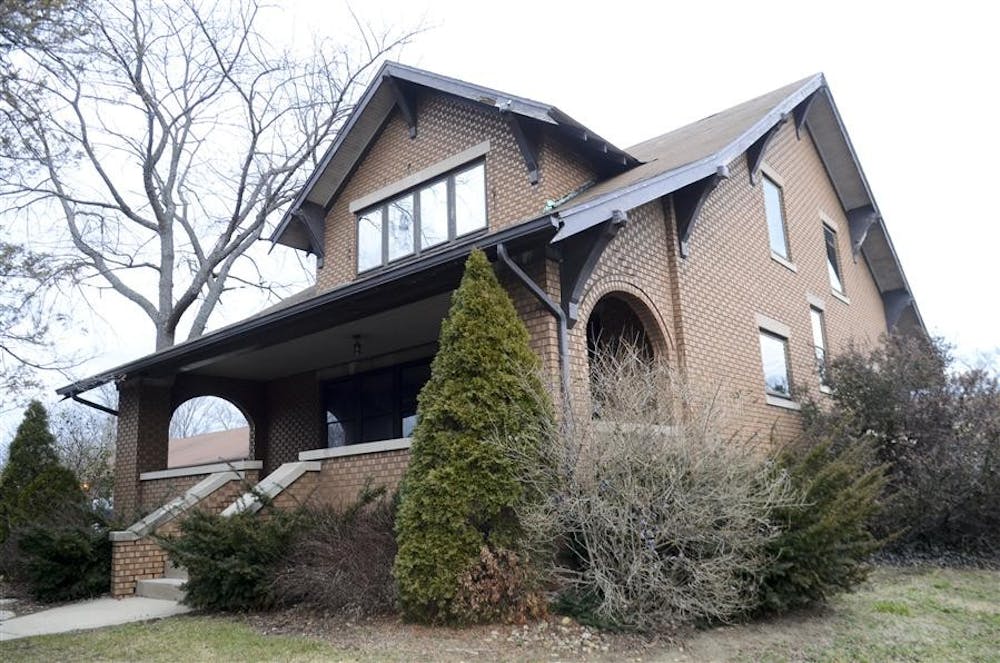A brick bungalow has existed in downtown Bloomington since its construction in 1928. However, the home’s current owners hope to uproot the two-story structure and move it into a new neighborhood.
But some call the house on North Walnut Street “historic,” resisting the current owner’s request.
After several hours of debate and numerous testimonies before the Bloomington City Council on Wednesday, the structure’s fate remained undecided.
Nancy Hiestand, program manager for historic preservation for Bloomington’s Housing and Neighborhood Development department, said the house is historic not only for its architecture but for its close ties to the community’s history. Hiestand urged the council to consider the area a historic district, preventing the bungalow from being moved.
Chris Bomba, who owns the structure with other members of his family, said the home is impractical. Currently, the house is divided into several office spaces and is zoned for commercial use.
But several factors make the space undesirable for business owners, he said. Along with inadequate parking, the bungalow is set back 40 feet from Walnut Street, making it difficult to see, especially for those in vehicles.
“It just doesn’t rent,” Bomba said. “We have tried to rent it for the last two years but haven’t been able to get any tenants in it.”
Bomba’s family also owns the adjacent property, High Point commercial development. He said he plans to construct a new apartment complex on the current High Point site, which he said would further hide the bungalow.
Last summer, Bomba filed an application for a demolition permit. He said he does not plan to demolish the building by “taking a wrecking ball to it.” Instead, he hopes to move the building to a new location.
“We do not believe the house is historic but believe it should be allowed to be moved and returned to its original purpose as a home within the neighborhood,” Bomba said.
Although Bomba said he did not yet have a specific location for the home, he said he has looked into several locations within close proximity to its current location.
In November, the Bloomington Historic Preservation Commission voted to protect the historic integrity of the home with a “demolition delay.”
From its construction until 1946, Roy Burns lived in the bungalow. During that time, Burns successfully opened a chain of small-scale grocery stores throughout Bloomington, opening his first store when he was 23 years old.
Because of this contribution to the community, Hiestand said Burns’s home was important. She said the house is eligible for registration as a historic place in five different categories.
Public comment about the issue was one-sided, with members of the surrounding community fighting to save the structure.
“This is a large house, and it will not be easy to move,” said Jan Sorby, president of Bloomington Restorations. “If you look at the size of the streets and the tree canopy, it will not be easy.”
Following the presentation, four council members said they would likely vote in favor of the bungalow’s consideration as a historic place. One voted against, and the remaining four declined to give their opinions.
City council members will make a final decision in their regular meeting Wednesday.
Downtown 1920s-era 'historic' house might move
Current owners hope to uproot, move it to new neighborhood

Get stories like this in your inbox
Subscribe





